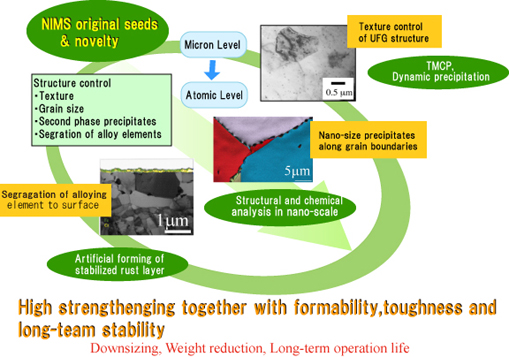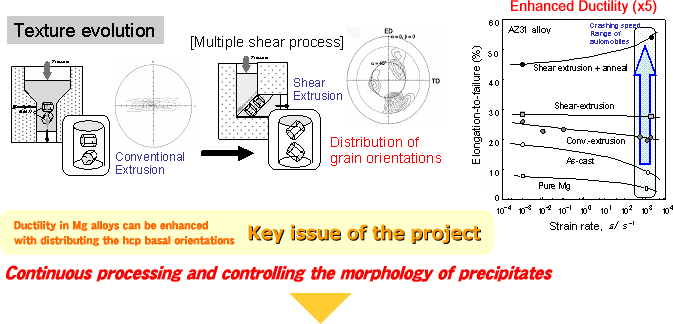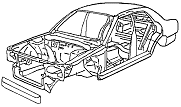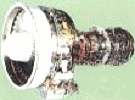Research Topics
・Ultra-High Strength Steel with Excellent Low Temperature Toughnes
・Design of High Strength, High Ductility, High Toughness
Magnesium Alloys
・Development of 1500MPa Class Low Alloy Steel with High Impact Strength
|
 |
|
Breakthrough in specific strength, heat resistance, and
corrosion resistance will be achieved through multi-scale structure control of
grain size, second phase, and texture as well as establishing characterization
techniques of structure and property in nano-micro scale.
Targets are 1) Mg
alloy with ductility and formability comparable to Al alloys, 2) heat resistant
steel that realizes 50K higher service temperature than the current one, and 3)
Cu and Ni-less corrosion resistant steel that has 1/10 of corrosion rate
Some seeds and competences are;
- Ductility enhancement by 5 times in Mg
alloys through texture control by multiple shear processing.
- Doubling
high-temperature creep strength at 923K in ferritic steel utilizing nano-size
precipitates along grain boundaries.
- Structural and chemical HRTEM analysis
of nano-size oxides, which makes clear the nature of the stabilized rust layer
of recently developed Al-Si steel.
|

|
 |
| Mg:1.74, Al:2.70, Ti:4.50,
Fe:7.87 |
 |
 |
| Object |
automobile structure |
| Aim |
weight reduction
of 200kg for +12% Mileage |
| Materials |
Mg alloy, Al alloy
high-strength steel |
| Essential |
High specific strength |
| Subject |
Ductility, Formability
comparable to Al alloy |
|
 |
| Object |
Jet engine |
| Aim |
Weight reduction
Replacement of Ni-base superalloy
→ 10% reduction of engine weight |
| Materials |
Ti-based alloys |
| Essential |
Good balance of
specific strength and
heat resistance |
| Subject |
Service temperature
600℃ → 900℃ |
|
 |
| Fe-0.8Al-0.8Si-C |
 |
| Object |
steel structure
in coastal area |
| Aim |
long life
Maintenance free for 100 years
by 1/10 less frequent
repainting |
| Materials |
steel |
| Essential |
corrosion resistance |
| Subject |
1/10 corrosion rate
without Cu or Ni |
|
 |
| Object |
Coal fired power plant |
| Aim |
High efficiency
10% improvement of power
generation efficiency
→ 5%
reduction of CO2 emissions |
| Materials |
Steel,
Ti-based alloys |
| Essential |
Heat resistance |
| Subject |
50K higher service temperature |
|
|
|